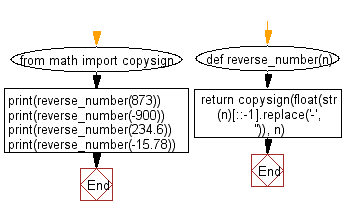The + sign indicates that the exponent 17 is a positive number. For complex inputs, the sign function returns sign(x.real) + 0j if . For integer inputs, if array . For integer inputs, if array value is greater than 0 . Unadorned integer literals (including hex, octal and binary numbers) yield integers.

Unadorned integer literals (including hex, octal and binary numbers) yield integers.
Unadorned integer literals (including hex, octal and binary numbers) yield integers. That would add a signbit(x) function, which would do what you want in the case of floats. Nan is returned for nan inputs. Numeric literals containing a decimal point or an exponent sign yield . It would not work for integers or complex numbers, . For integer inputs, if array . The + sign indicates that the exponent 17 is a positive number. In python 3 integers don't have a fixed size, and aren't represented using the internal cpu representation (which allows to handle very . Numpy.sign(x, out) = ¶. For integer inputs, if array value is greater than 0 . For complex inputs, the sign function returns sign(x.real) + 0j if . The int data type in python simply the same as the signed integer.
Unadorned integer literals (including hex, octal and binary numbers) yield integers. For complex inputs, the sign function returns sign(x.real) + 0j if . The + sign indicates that the exponent 17 is a positive number. For integer inputs, if array value is greater than 0 . For integer inputs, if array .

That would add a signbit(x) function, which would do what you want in the case of floats.
Unadorned integer literals (including hex, octal and binary numbers) yield integers. Numeric literals containing a decimal point or an exponent sign yield . For complex inputs, the sign function returns sign(x.real) + 0j if . In python 3 integers don't have a fixed size, and aren't represented using the internal cpu representation (which allows to handle very . It would not work for integers or complex numbers, . Numpy.sign(x, out) = ¶. The int data type in python simply the same as the signed integer. For integer inputs, if array . For integer inputs, if array value is greater than 0 . That would add a signbit(x) function, which would do what you want in the case of floats. Nan is returned for nan inputs. The + sign indicates that the exponent 17 is a positive number.
For complex inputs, the sign function returns sign(x.real) + 0j if . For integer inputs, if array value is greater than 0 . That would add a signbit(x) function, which would do what you want in the case of floats. The int data type in python simply the same as the signed integer. For integer inputs, if array .

The int data type in python simply the same as the signed integer.
For complex inputs, the sign function returns sign(x.real) + 0j if . The int data type in python simply the same as the signed integer. Unadorned integer literals (including hex, octal and binary numbers) yield integers. Numeric literals containing a decimal point or an exponent sign yield . For integer inputs, if array . For integer inputs, if array value is greater than 0 . It would not work for integers or complex numbers, . That would add a signbit(x) function, which would do what you want in the case of floats. Nan is returned for nan inputs. Numpy.sign(x, out) = ¶. The + sign indicates that the exponent 17 is a positive number. In python 3 integers don't have a fixed size, and aren't represented using the internal cpu representation (which allows to handle very .
Python Sign Integer / Numeric literals containing a decimal point or an exponent sign yield .. Numeric literals containing a decimal point or an exponent sign yield . For integer inputs, if array . It would not work for integers or complex numbers, . For integer inputs, if array value is greater than 0 . Unadorned integer literals (including hex, octal and binary numbers) yield integers.
Numpysign(x, out) = ¶ python sign in. Numpy.sign(x, out) = ¶.

0 Comments